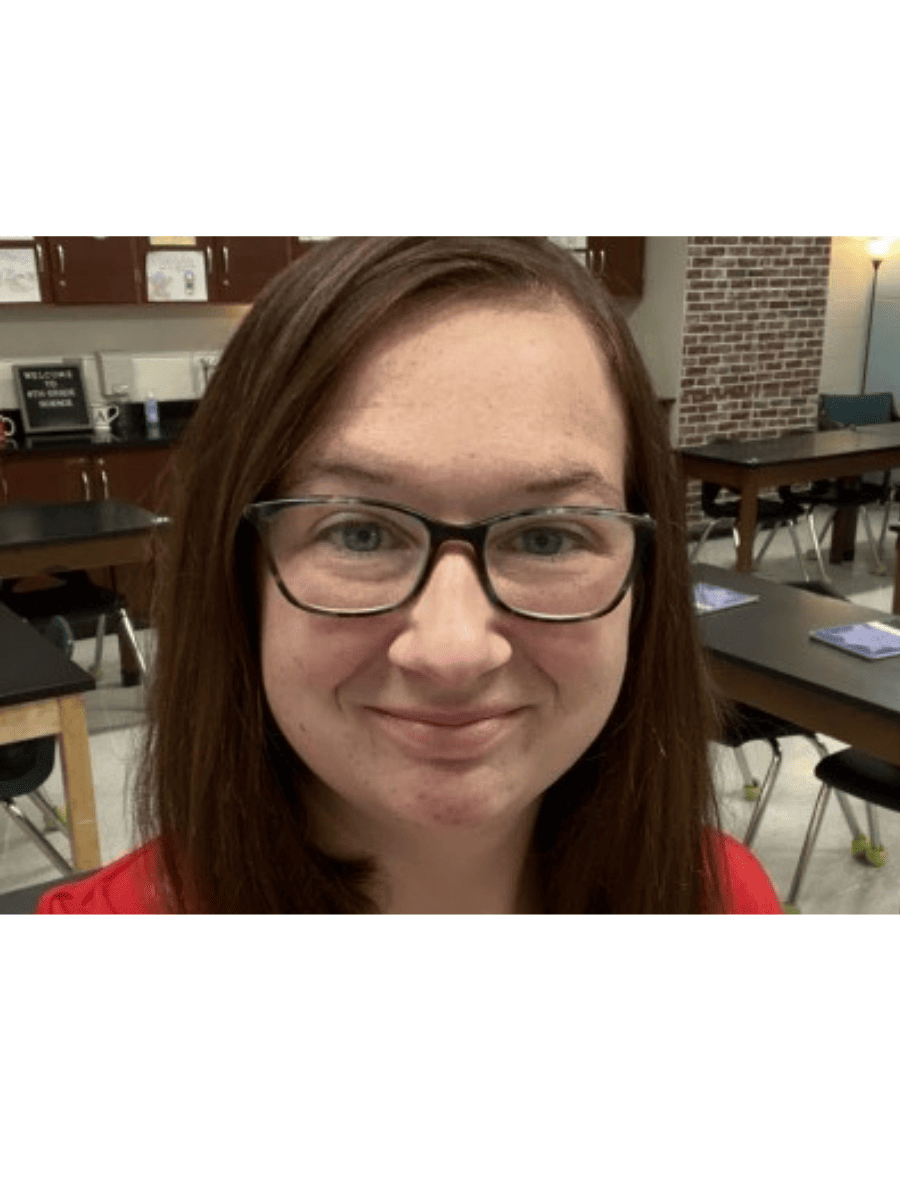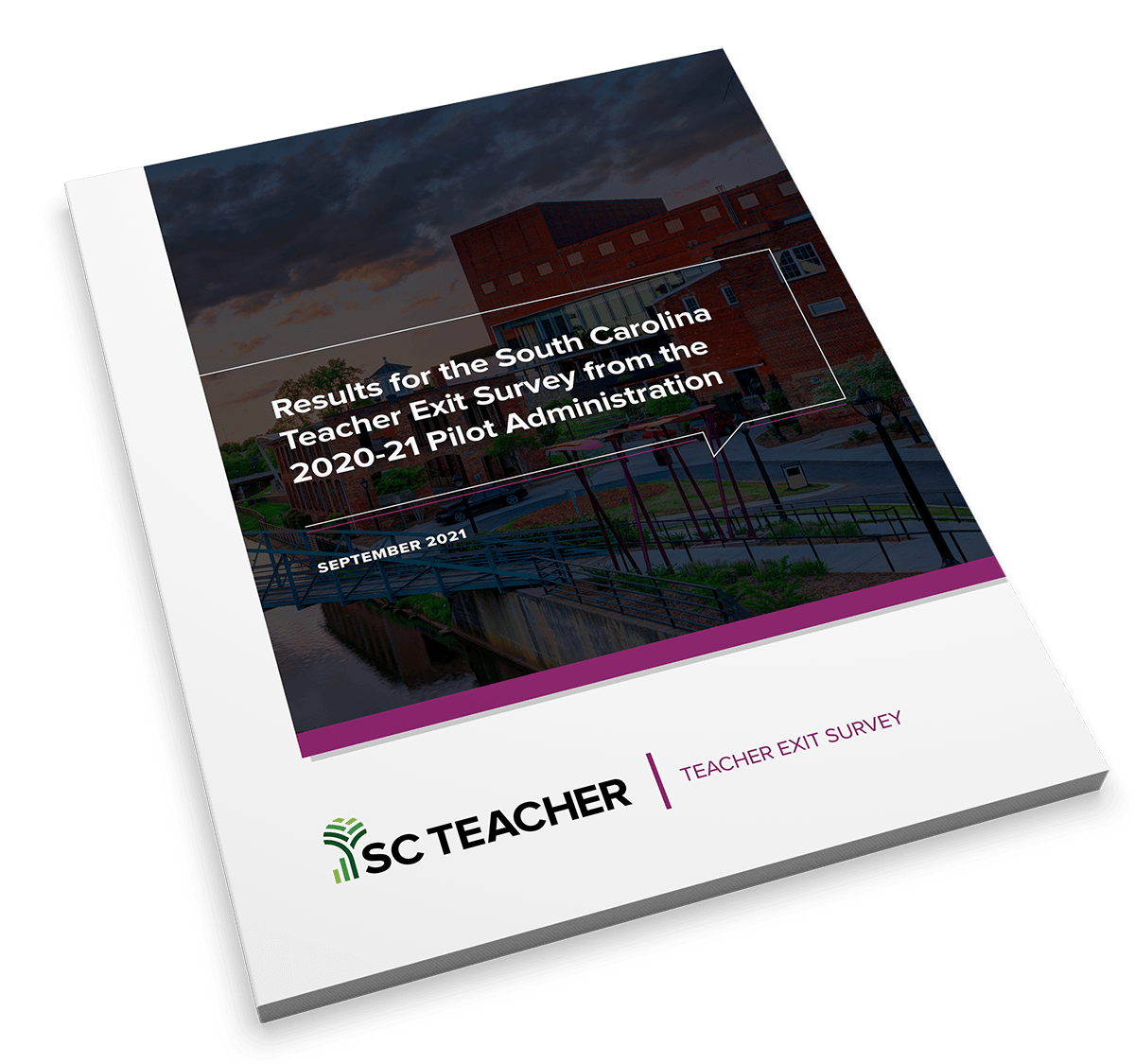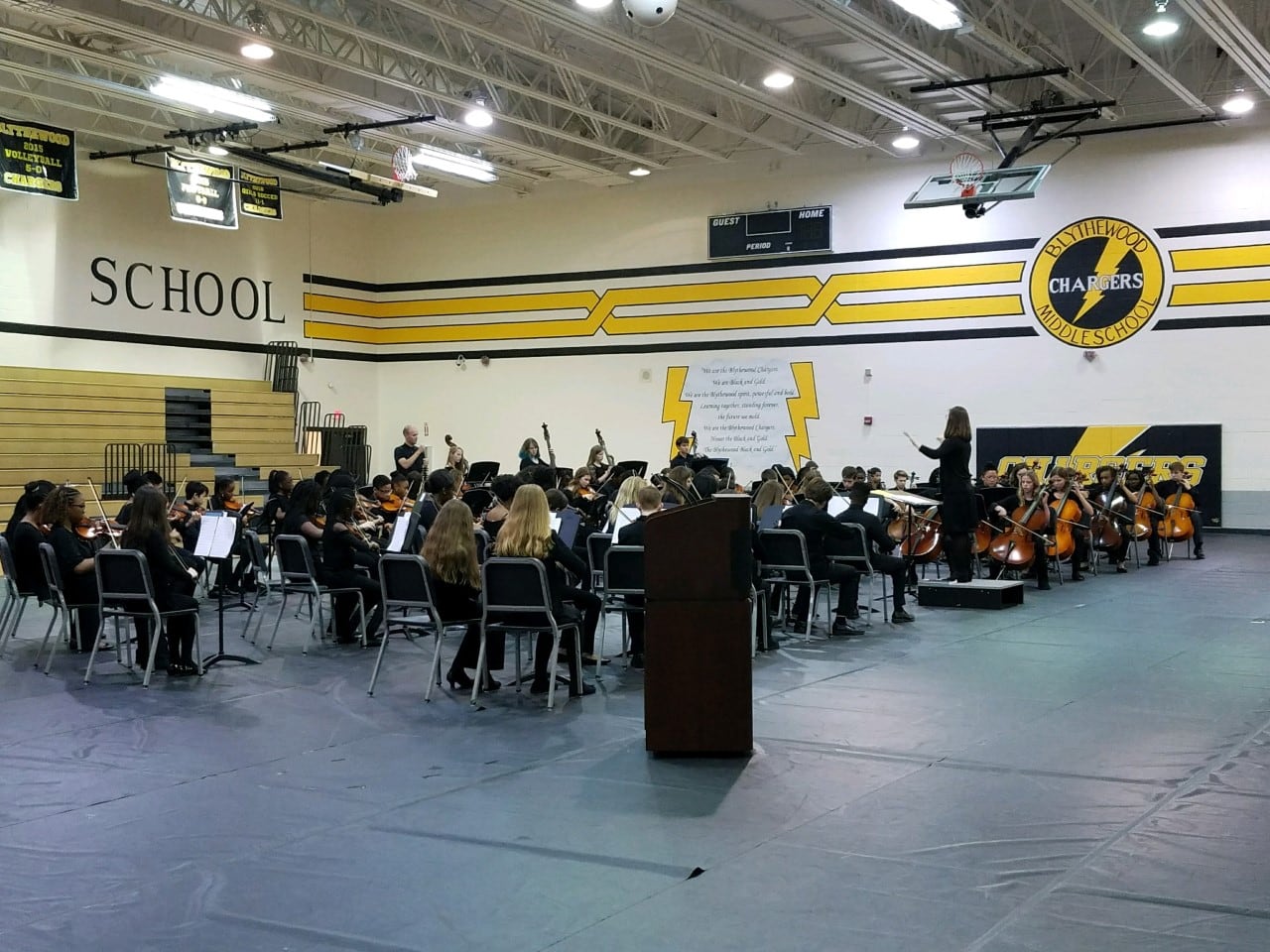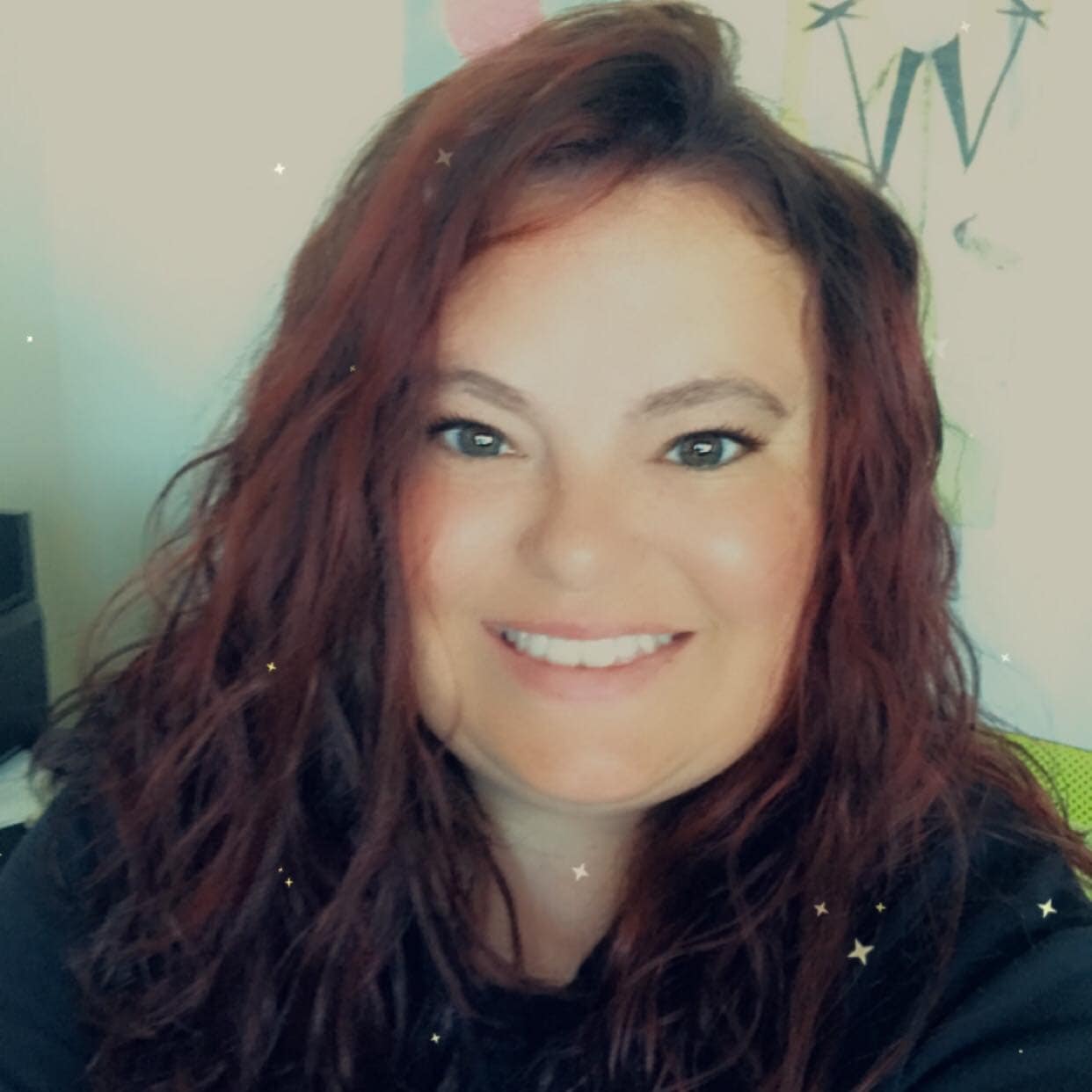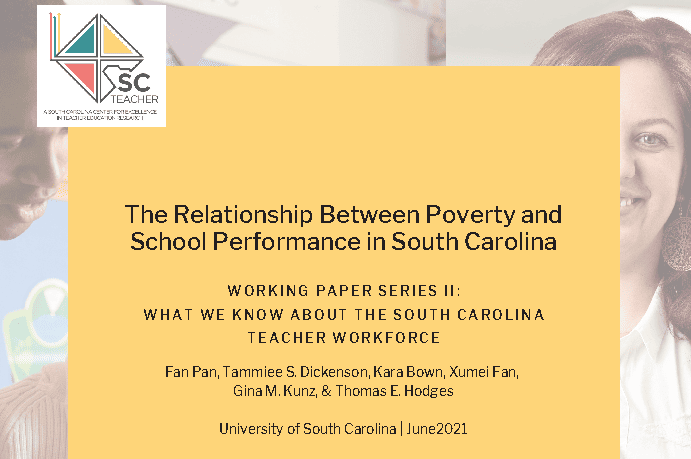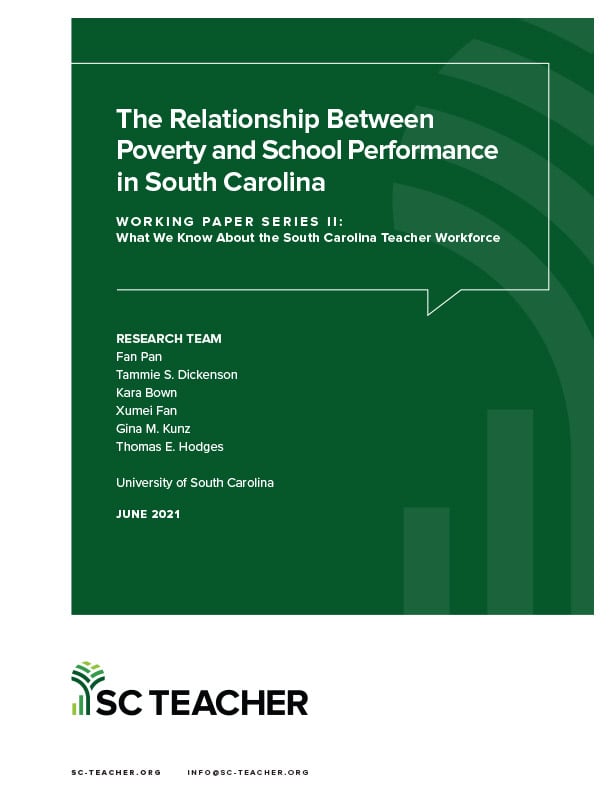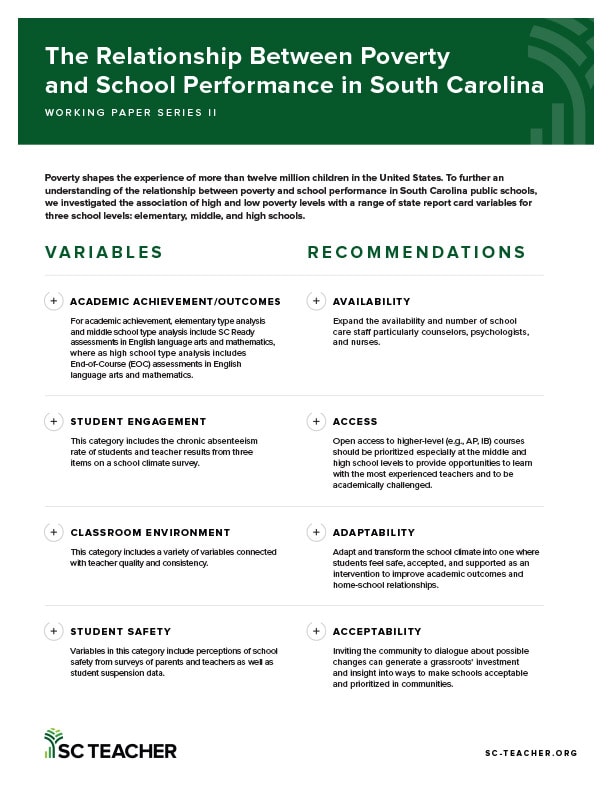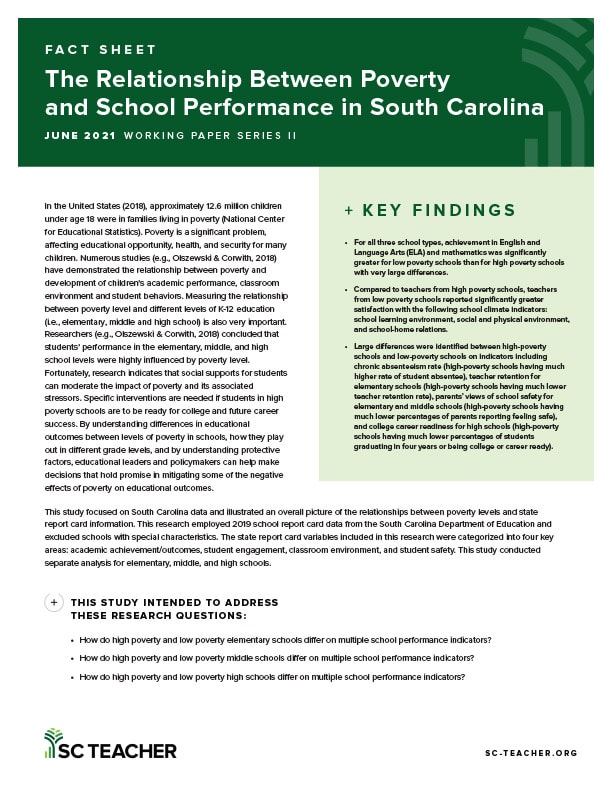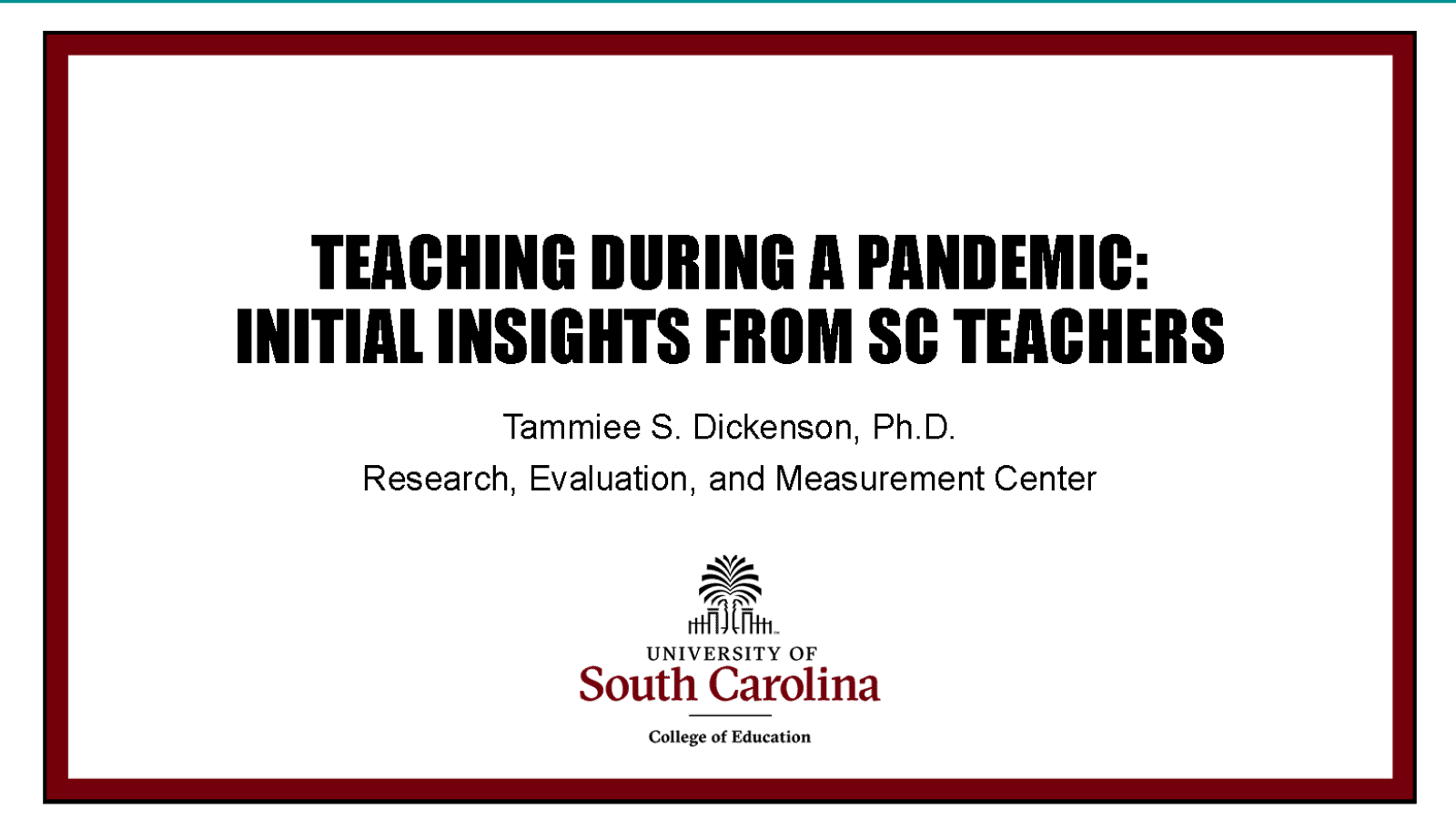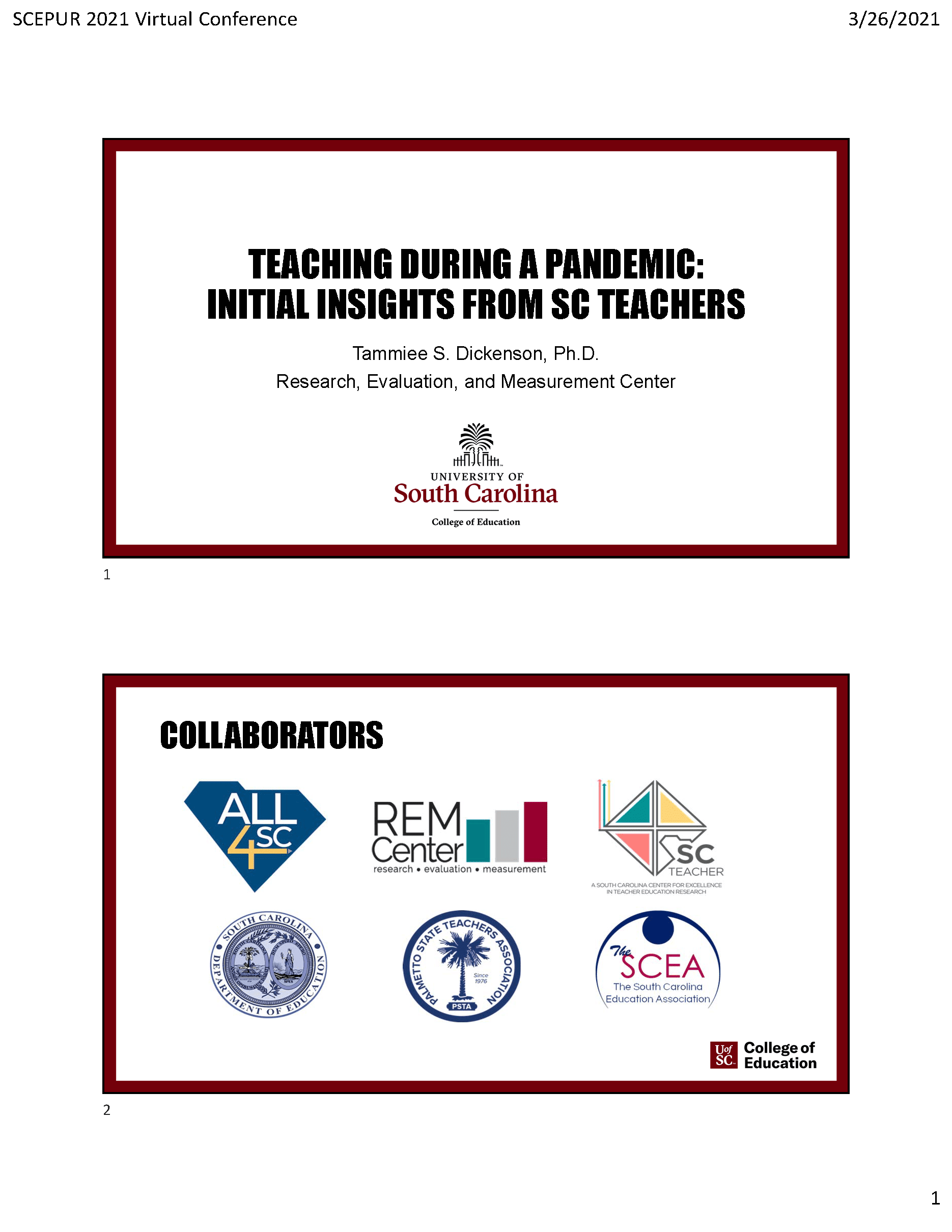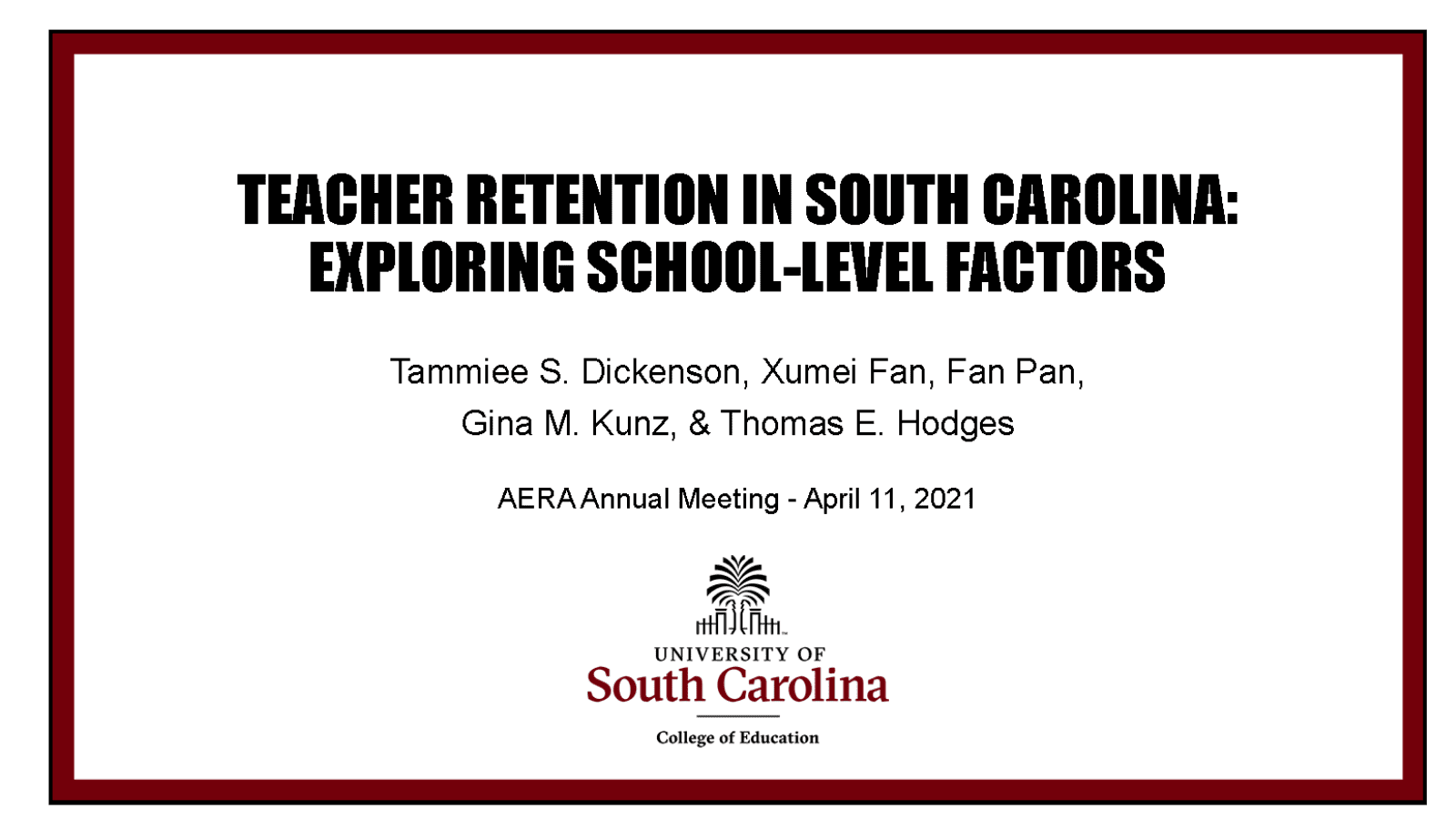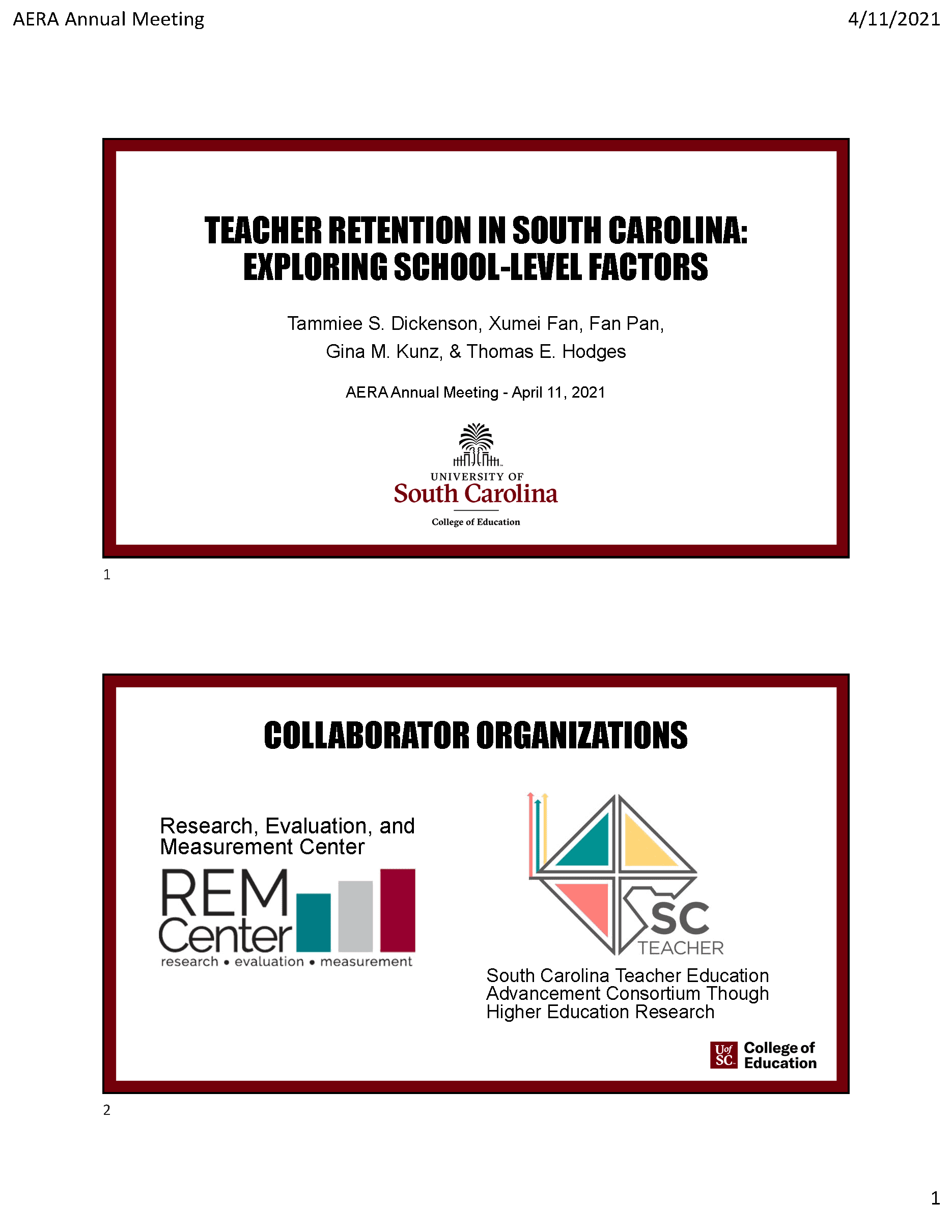Belief and Support: What First-Year Teachers Need
It was our open house two days before the start of school. I was excited and anxious about meeting my students and their parents for the first time. In just two short days, I was finally going to have my own classroom. I put the last touches on each desk, taping down the name tags when my principal walked in. I was surprised to see her because it was just a couple of minutes before the doors would open to families.
“I don’t mean to alarm you,” she began, “but I did want to let you know that a parent requested to move her child to another classroom. She doesn’t want her son, James, in a first-year teacher’s class.”
My heart sank.
I was distraught and confused about why a parent didn’t want their child in my class without even getting to know me. The principal added, “I am not going to move him because I believe you will be a great teacher for him.”
I thanked my principal for her honesty and quickly went to find Ms. Hunter and the other second grade teachers. I shared my feelings about this parent that had judged me prematurely. I was grateful to have someone that could understand where I was coming from. She reassured me that our principal was correct; I was more than capable of helping any student in my class. I was relieved that I had so much support from my colleagues, however, I was still nervous about meeting the parents. I quickly put myself together as I headed back to my classroom for the open house.
James’ mother had many questions for me. She asked about my teaching philosophy, how I planned to help struggling students in my classroom, forms of communication, and more. She also mentioned that she was an educator herself. This made me wonder even more why she wouldn’t want to give me a chance.
She had been in my shoes.
Her worries and concerns became clear when she mentioned that James was not a strong reader. Now, I understood her hesitation. A parent wants what is best for their child, especially when it comes to their education. His mother didn’t believe that a first-year teacher could be that person for him. A parent wants what is best for their child, especially when it comes to their education. His mother didn’t believe that a first-year teacher could be that person for him.
A parent wants what is best for their child, especially when it comes to their education. His mother didn’t believe that a first-year teacher could be that person for him.
I wanted to prove her wrong. I wanted her to know that I would do anything I could to help her child succeed in my classroom.
I set out to understand James’ reading struggles. I began to notice that he did not like independent reading. He would play with his book, fake read, or disrupt other students while they read. When I would sit next to him and ask him to read to me, he would stay very quiet and seemed worried that others could hear him.
I sought help from my reading coach. I wanted to make sure I took all the necessary steps to support him. She felt that guided reading would be the most beneficial. It would allow me to sit in a small group setting and focus on his particular needs. I was, however, a bit unsure about how to do it. I met with the reading coach multiple times a week to create a plan to help James and all of my students succeed in reading.
As the year went on, I leaned on my CarolinaTIP Coach, Mrs. Stewart. She was someone full of knowledge that I could rely on to help me with my classroom needs and emotional support. She showed me how to approach guided reading. Mrs. Stewart also made it clear that if I ever needed anything, I could call or message her at any time. She would regularly call and ask how I was doing. We would talk about anything and everything, even if it had nothing to do with school. I knew that I could count on her for anything.
As the year went on, I leaned on my CarolinaTIP Coach, Mrs. Stewart. She was someone full of knowledge that I could rely on to help me with my classroom needs and emotional support.
I implemented guided reading, but James still did not progress. My school decided to train my reading coach and me in a new program that required us to work with 1-2 students for 30 minutes each day. We realized there was a missing link in helping students like James and hoped this would bridge that gap.
When we first began, James was very nervous. We sat at my small group table, and I said to him, “Look around the room. Everyone has headphones on, and they will not be able to hear you reading. I am the only one that will be listening to you.” As soon as I said this, I could see the relief on his face. He needed reassurance that he was not going to be judged by his peers.
I worked with him every single day. He opened up more and more. He became excited to read. Before, I would have to ask him multiple times to sit down with me, and now he was reminding me of when we were supposed to begin. He finally felt comfortable reading to me. He even started to open up about what he loved to do outside of school, like playing football.
At the end of the year, I received an email from James’ mom saying, “I want to thank you for everything you have done for my child this year. You have helped my child more than I could have ever imagined.” When I read the email, I was relieved, excited, and overjoyed. I knew that I had worked very hard to make sure James succeeded. As a new teacher, I believe that I was more willing to seek out the help that I needed to support my students than others more secure in this profession. In the end, all the teachers at my school were trained in the program this past summer. We realized the importance of reaching all students at their level and implementing a program to help them succeed.
CarolinaTIP has helped me realize that even though I was a first-year teacher, I knew what I was supposed to do in my own classroom. Though college prepared me to manage a room full of students, CarolinaTIP helped me feel confident in what I was doing. They heard my concerns, celebrated my achievements, and followed my highs and lows. They encouraged me to share my struggles and in return, helped me when I asked. All new teachers deserve the opportunity to show what they are capable of — even in their first year.
We just need others to believe in us.
Though college prepared me to manage a room full of students, CarolinaTIP helped me feel confident in what I was doing.
This story is published as part of a storytelling retreat hosted by the Center for Educational Partnerships (CEP) housed in the University of South Carolina’s College of Education. CEP partners nominated practicing educators, administrators, and system leaders to share their stories. The Center for Teaching Quality (CTQ), a CEP partner, facilitated the retreat and provided editorial and publication support. Learn more about this work and read additional stories by following @CEP_UofSC and @teachingquality.
Finding the Light
As the early sun begins to rise from the horizon, I turn my classroom key to a series of clicking sounds as the lock’s mechanisms shift. I step into my dark, silent room and begin my daily routine. Slowly, I walk around the room, turning on each light and lamp, and then walk to the board to write the day’s plan. As I do each of these tasks, I find peace in the stillness as I prepare for the day ahead. I begin to anticipate the learning, collaboration, and joy that I know will soon occupy this same silent space. Through these simple, mundane moments, I reflect on my current classes and the classes I’ve taught in the past. During these times, I remember my journey from an excited and slightly naïve first-year teacher into the kind of professional educator I aspired to become.
Throughout my life, I have always wanted to be a teacher. I attended college and stretched myself to reach my goals. I wrote lesson plans with precise details for the highest level of engagement, created a thorough management plan to help all students learn, and was emboldened with a determined spirit to achieve great things in my first year of teaching. Before I realized it, I was at school for my first day, welcoming my first group of students into the classroom.
The day was a blur of learning about new students, sharing about myself and science, and going through our first collaborative activity together. When the last student walked out the door that day, I realized that the day was successful, and I hoped it was a sign of how great the rest of the year would be. However, as the days started turning into weeks and the weeks turned into months, the reality of teaching began to slowly set in. What I thought was a great management plan disintegrated quicker than paper in water, and my lessons full of engagement fell short of anything spectacular. As I stared at the sunrise and sunset from my classroom, I realized that my aspirations of a perfect first year were now a distant dream, shattered in front of me.
It was in one of my silent early morning car rides, driving from one interstate to the next, that I thought about the mess of my first year. How could I become a better teacher? How could I create a more cohesive and successful classroom environment? Would my students be better with a different teacher? I began drowning in feelings of isolation and hopelessness. I considered turning my classroom lights off and never walking back through the door that once held my big, bright dreams of teaching.
How could I become a better teacher? How could I create a more cohesive and successful classroom environment? Would my students be better with a different teacher?
Fortunately, there were life preservers that kept me from getting to that point: the most important was my Carolina TIP coach.
My coach supported me through the highs and mostly lows I experienced in my first year. She gave me encouragement when I was heartbroken, and she gave me moments of laughter when all I wanted to do was cry. She visited with me at school to offer in-class support, and she met with me every time I needed to vent. She helped me find the light and stay focused on it all of the time.
Fortunately, there were life preservers that kept me from getting to that point: the most important was my Carolina TIP coach.
My coach helped me realize that my desire to get every single thing right was part of the problem. In my mind, if every single detail was not right, then everything was wrong. There is an old saying that teaching is messy, and it took time and reflection with my coach for me to embrace this truth. With their help, I was able to mitigate the problems that had arisen as I lost my direction. On one March afternoon, I began to recognize the results of my efforts. My principal came to observe me, and she left a note telling me that she saw improvement and enjoyed watching my lesson. When I had a free moment that day, I rushed to take a picture of the note to send to my CarolinaTIP coach. We celebrated this tiny win like it was the best thing I did that year. Though it was a small, short message, It was what I needed to realize that I could achieve my professional aspirations.
As my first year began to wind down and I began boxing my supplies, I reflected and prepared for the next year. Over the summer, I took the first CarolinaTIP graduate course, which gave my reflections structure. On the first day of my second year, the familiar clicking noise and slow lighting of my room greeted me as an old friend. As each light turned on, I reminded myself that I was ready for all the challenges and successes I would face that year and every year to come in my teaching career.
This story is published as part of a storytelling retreat hosted by the Center for Educational Partnerships (CEP) housed in the University of South Carolina’s College of Education. CEP partners nominated practicing educators, administrators, and system leaders to share their stories. The Center for Teaching Quality (CTQ), a CEP partner, facilitated the retreat and provided editorial and publication support. Learn more about this work and read additional stories by following @CEP_UofSC and @teachingquality.
Finding the Joy
Soon beginning
I eagerly anticipated what was to come.
Hard not to crack a smile, thinking of
How grand it would be.
A decorated classroom bursting with color.
Collaborative, Creative.
Engaging lessons that would get students moving,
Working together.
Procedures and expectations set in place to keep the year
Running smoothly.
Greeting my students at the door with a smile.
A smile they can see.
A first-year teacher. I felt ready to conquer the world.
Little did I know
What the world had in store.
Beginning my teaching career during a global pandemic altered every expectation I had for my first year in my own classroom. I knew that my purpose for teaching was deeply rooted within me–and I hope that it always will be–but as the first day of school approached, I quickly realized that how I would live out and achieve that purpose was shifting each and every day with the spread of COVID-19.
A vision flipped upside down.
Seats in rows
D i s t a n c e d.
Unable to move desks into groups
Greeting half of my students at the door with a smile
A smile they cannot see.
The other half joining from a Google Meet,
Black boxes staring back at me.
Long nights converting methods and ideas I had learned and studied
into digital platforms.
Hand sanitizer, soap, quarantines, nurse calls, questions, concerns,
Fear.
One particular day, as I looked onto the computer screen at the masked faces of my students joining class on a Google Meet, my teacher-heart was hurting more than it had all school year. I wanted to be with them. I wanted things to be normal. I was tired. I was trying my hardest. And more than anything, I didn’t feel like myself.
I felt as if the craziness of the world and the unpredictability of the virus – on top of the uncertainties and pressures of a first-year teacher – were starting to take a toll on my positivity, creativity, and drive. And on that particularly challenging day, feeling heavy with disappointment and worry, I realized that I had to do whatever I could to protect my love for this profession from the craziness, the loudness, and the never ending surprises of the pandemic.
I thought back to myself in high school, when I was the age of my students. I had been a TeacherCadet, and I soaked up every minute of that class, learning about the hard work, innovation, and compassion that it takes to be a teacher. I remembered how that class confirmed the desire I had always had to go into education and the excitement and confidence that the Teacher Cadet program instilled in me. I thought of the young me sitting in that class, understanding that teaching would be difficult but also believing that there could not be a more rewarding and important job.
Reflecting on those memories, I felt a sense of gratitude that I truly had followed through and entered the teaching profession. I knew that the love I had for my students and for teaching was worth fighting for, and as I walked into school the next day, I had one mission in mind — a simple mission –but one that required commitment.
Find the joy.
The next day at school,
I tried it out.
What is my joy?
Today, I woke up and made it to school.
I’m here with my students.
Mentally, physically, emotionally,
I showed up.
A small-sounding feat.
But today, it’s enough.
A tiny victory, a tiny joy.
But today, I celebrate it.
Time goes on.
Day by day,
Noticing the joy becomes easier and more natural.
One day, my joy is a class with no quarantines.
All being together in person seems small,
But we celebrate.
The next day, my joy is,
“Ms. Gardiner, this is the first book I’ve read all the way through. I couldn’t put it down.”
He and I celebrate.
Joy is the shocked faces when the bell rings.
“Class is already over? That flew by!”
My joy one day: “I finally get it!”
A lesson that worked.
A quiet student who boldly spoke up.
A department meeting full of laughs.
Rachel’s writing conference,
Quay’s job hunting updates,
Tristen volunteering to be Romeo,
Carly Mae’s creative presentation,
Andrew’s subtle smile at the end of the class.
Finding the joy.
“Finding the joy” changed the trajectory of my year. It rekindled my teacher’s heart and fueled mypassion for showing up each day with a positive outlook, a passion for my content, and a renewedenergy to serve my students as best I can. The funny thing about joy, though, is that it’s contagious. Ibegan to ask, “Can I help my students do the same?”
Joy.
It cannot be contained. When found by one,
It grows,
And grows,
And grows.
Until it is shouting to be shared with others.
When my students’ major essays were due for their last unit, we spent a day celebrating each other’s work. As we went outside and made a circle in the grass, students traded papers and read each other’s writing. Then, we went around the circle and shared something brilliant that we noticed in someone else’s writing. I sat back and watched the proud faces of my students as someone else spoke of the beauty and growth that they saw. I watched them walk back into the classroom feeling proud of themselves for accomplishing such a feat even in the midst of quarantines, ever-changing schedules, and the weight of our current world. They were encouraged and motivated to continue pushing themselves to do better. They left the classroom that day celebrating the big and small victories. They saw themselves as true writers, as learners, as a family. They found joy.
This story is published as part of a storytelling retreat hosted by the Center for Educational Partnerships (CEP) housed in the University of South Carolina’s College of Education. CEP partners nominated practicing educators, administrators, and system leaders to share their stories. The Center for Teaching Quality (CTQ), a CEP partner, facilitated the retreat and provided editorial and publication support. Learn more about this work and read additional stories by following @CEP_UofSC and @teachingquality.
Results for the South Carolina Teacher Exit Survey from the 2020-21 Pilot Administration
The pilot administration of the SC Teacher Exit Survey (SC-TEACHER, 2021) from the 2020-21 academic year yielded insights directly from teachers in the state on key reasons for teacher turnover. The sample was limited to five school districts located in the Midlands region. Expanded data collection statewide would provide results that more fully represent the SC teaching population. It should also be noted that the results are comingled with the influence of the COVID-19 pandemic.
Finding My Rhythm as a New Teacher
As a fourth grader, I remember being shuffled down to my school’s auditorium one morning for a performance from the fifth grade strings class. I had no clue what to expect, but it captured my interest. I was captivated by the many instruments and decided then that I would pursue learning a stringed instrument.
That decision impacted the rest of my life.
Shortly thereafter I was preparing for my first orchestra class, praying I could play the cello and relenting when told to pick something smaller. “As long as it’s NOT the violin.” I had an incurable desire to be unique, which led to a viola being placed in my hands. Before orchestra classes began I remember sitting in the living room at home, staring at the instrument with wide eyes full of wonder and admiration.
Fast forward to my freshman year at the University of South Carolina. I decided to major in music education. My teachers have succeeded in inspiring me to complete the cycle they began: enter the classroom, instill a love of music and learning, build relationships, inspire the next generation, and repeat. As a new student at the university, I was able to be a part of the UofSC String Project, an organization that hosts students from across the Midlands in beginning orchestra classes, private lessons, and ensembles. First year undergraduates in the program begin as classroom assistants, then progress to having private studios as sophomores. As juniors and seniors, undergraduates maintain their private studios and teach second year and beginning orchestra classes. Not only was I able to get real life and real classroom experience, but I was also able to form relationships with students that still keep in touch!
When my senior year arrived, I could not believe that the time had come for me to enter into the classroom myself. I was nervous and anxious, despite knowing I had received high quality training for the seven semesters leading up to that point (the Imposter Syndrome symptoms were real). But I wasn’t just anxious; I was excited! I was eager to please, hanging onto every word and ounce of feedback my coaching teachers offered. I remember keeping a journal of their advice and reflections, and frantically taking notes during our debriefs following a lesson. My podium time and their advice helped boost my “bag of tricks,” and I began to find my own teaching style.
In the Fall of 2017, I put my teaching strategies to the test as a middle school Orchestra Director. It felt good to have my first real gig as an educator. I was staying in an area where I had connections and mentors. I was entering into a district that supported and promoted the arts. And I was coming into a school program that was well known. An added bonus – the other music teachers were brand new too, so we could start fresh and build our programs in a way that encouraged and promoted growth and collaboration. I remember waking up on my “first day of school,” putting on my “first day of school” outfit, taking my “first day of school” photo, and getting to the building only to find that I was absolutely terrified. I had a plan, but having a plan and putting said plan into action are NOT the same. Even doing something as simple as going over my Orchestra Handbook felt daunting.
I had a plan, but having a plan and putting said plan into action are NOT the same. Even doing something as simple as going over my Orchestra Handbook felt daunting.
As you may have assumed, I survived my first day, and learned quickly that getting through the first year would be all about survival. I remember one afternoon in the fall, I was in my classroom working during a planning period when my phone rang. The person calling was Nicole Skeen, a representative of the Carolina Teacher Induction Program (CarolinaTIP). I had heard of this program before, but I was not in the business of saying yes to every opportunity that came my way during year one. “It’s all about survival. You can say no,” was my motto. I had overextended myself during my senior year in college and did not want to bring that stress upon myself again. But there was something in the way Nicole described the program that caught my interest, she spoke of CarolinaTIP with so much passion and the teaching profession with sincerity.
I caved and said “Yes!” And Nicole’s reaction? Absolute joy.
How could I say no to a program that so desperately wanted to aid my profession? How could I say no to a program that would benefit my students? How could I say no to someone who wanted nothing more than to help me become the best version of myself in the classroom? Exactly – I couldn’t.
How could I say no to someone who wanted nothing more than to help me become the best version of myself in the classroom? Exactly – I couldn’t.
To be candid, I was skeptical about the benefit this program would be to me at first. As a middle school orchestra director, I was leaning heavily on my colleagues and music mentors to help me with daily classroom instruction. Many general classroom instructional strategies don’t quite fit my teaching mode because of the fundamental differences between a music classroom and core content classrooms. But I quickly realized that CarolinaTIP was not just about refining my teaching skills. It was about building relationships and empowering me to build relationships with my students. Did we create classroom management plans? Yes. Did Nicole sit down with me personally to wrestle with how to better pace my sixth grade instruction? Absolutely. But CarolinaTIP did this in a way that made me feel valued in my profession. Their feedback and consideration was rooted in experience and above all else, their belief in the value of relationships.
I survived that entire first year in the classroom (and the following three)! Throughout every year there are tears and regrets, lessons learned, and tweaks made. But one thing remains the same — the importance of relationships. Something I like to tell my students is, “I’m on your team, no matter what.” I want my students to know that above all else, I support them and am invested in their goals, hopes, dreams, and aspirations. Do I want them to play their notes in measure 57 in tune? Yes. But even before the music making begins, I want them to know that I care.
So as the 2021 school year begins and I approach another year riddled with uncertainty, I can lean on the relationships I have with my mentors, colleagues, CarolinaTIP coaches, and my students. I look forward to making music in the classroom again, but more importantly, I look forward to continuing to get to know the familiar and new faces that enter the orchestra room this fall.
This story is published as part of a storytelling retreat hosted by the CarolinaCrED housed in the University of South Carolina’s College of Education. CarolinaCrED partners nominated practicing educators, administrators, and system leaders to share their stories. The Center for Teaching Quality (CTQ), a CarolinaCrED partner, facilitated the retreat and provided editorial and publication support. Learn more about this work and read additional stories by following @Carolina_CrED and @teachingquality.
When Does the Magic Happen?
Blue dress with white stripes. White cardigan. New sandals with sparkling jewels. I knew I couldn’t wear my normal everyday attire of jeans and flip flops. I was meeting the teachers and district personnel that I would be working with in my new position as a 4K Behavior Coach for School District Five of Lexington and Richland Counties in Irmo, South Carolina. The district had launched implementation of the Pyramid Model with Dr. Kate Ascetta from the University of South Carolina as part of the Professional Development School District work. This led to the creation of a new position for a coach that would support classroom teachers as they began putting the Pyramid Model into practice in classrooms.
This is where I enter the story.
The teachers and district personnel were being trained on a tool used to measure the implementation of Pyramid Model practices in preschool classrooms. I was told that teachers had a year of Pyramid Model learning under their belt and the district was ready to hit the ground running. I was looking forward to rich conversations during the training about how the practices might take shape in their classrooms. I was also eager to help talk through any problem scenarios that may arise while planning.
The training was taking place at the middle school I attended. Memories came flooding back as I walked from the front office toward the cafeteria to the elevator at the bottom floor. As a student, I didn’t even know the school had an elevator. The closer I got to the room, the more nervous I became. Just like the trainer, I would not know anyone in the room. I took a deep breath and walked in. I saw one familiar face, the trainer, my coach from the University of Florida, and immediately felt a sense of relief.
As the training began, we went around the room and introduced ourselves. It was overwhelming trying to keep the names, faces, and schools together. When it was my turn to introduce myself, I thought everyone would look excited to meet me. After all, we were about to embark on an incredible journey, learning and growing together.
I did not receive the warm reception I anticipated. I was greeted with a mix of blank and angry stares. I would come to understand the reasons for this reception later in the school year.
As the morning progressed and the trainer unpacked the key practices that were part of the observation, the mood in the room was shifting. The jovial side conversations stopped. They were replaced with whispered comments, frowns, and confused looks. I scanned the room and realized that every table had fallen quiet and looked as though they were hearing this information for the first time. When we broke for lunch, the trainer and I left together. I looked across the table and asked, “Do you get the feeling that the teachers are acting like they do not know what the Pyramid Model is or what the TPOT is used for?” “You’ve got your work cut out for you,” was the trainer’s response. This was the beginning of a hard year full of hurdles and roadblocks. One of the hardest days was when two teachers had a conversation about how stupid this was and claimed they would just keep doing whatever they wanted to do regardless of what that coach or the district says.
That coach was me.
As the year progressed, I began to understand the source of the negative feelings. The message about the Pyramid Model and the coaching that we would be doing was announced to principals, who were then charged with disseminating that information to their 4K teachers. Each school’s administrator heard the message differently and shared the message differently with teachers.
We ended up with 12 teachers all thinking different things were going to happen, one coach thinking the teachers were much further down the road in their knowledge of the Pyramid Model, and a group of district personnel who were unaware that the lack of clarity and communication directly with teachers was causing the vision of Pyramid Model implementation to crack.
I knew my initial plan was not going to work. I needed to reevaluate everything. I felt the only way to “fix” things was to go back to the beginning and restart. Restarts are not easy because usually the damage has already been done during the initial start. I was hoping that the damage was minimal.
I was wrong... again.
Teachers were frustrated that they were being 'evaluated' on their implementation of practices they felt they did not even know... I decided I needed to take the focus off of the observation tool and start focusing solely on the teaching practices that were important to the teachers to implement.
Teachers were frustrated that they were being 'evaluated' on their implementation of practices they felt they did not even know. Many attempts were made to emphasize that the observation tool was not an evaluation but an observation geared toward two things: guiding myself to know how to provide the best support to teachers in growth areas, and guiding professional development efforts in the district based on areas of improvement districtwide. But the only thing teachers saw was that there was a score at the end and anything less than perfection was not acceptable. The score was becoming the focus for everyone, when in reality the focus needed to be on teaching practices.
I decided I needed to take the focus off of the observation tool and focus solely on the teaching practices that were important to teachers. In doing this, we started building relationships and talking more openly. The teachers began to see I was there to support their needs, not coming in to tell them what they needed to be doing instead. Teachers started identifying areas in their classroom where Pyramid Model practices might accelerate learning, and together, we worked toward implementation.
During this time, teachers opened up. One group of teachers said they were led to believe this was strictly a parenting program and that my role was to help facilitate incorporating the parenting program into the overall 4K program. One group of teachers was told that I was coming to evaluate the children’s behavior and “fix” it. One teacher even said “I did not know you were coming to watch me. I thought you were here to watch the kids. I feel like I was lied to.”
It all started to make sense. From the top, they believed that the message was delivered clearly about what was going to happen. In actuality it became a game of telephone, where one person whispers the phrase and the message shifts as it travels down the chain of listeners. Without fail, the message is always extremely different from the first person to the last.
It became evident that in order for this process to work, we needed to start communicating directly with teachers. We needed to be as clear as possible about our ideas and the vision for implementation.
It became evident that in order for this process to work, we needed to start communicating directly with teachers. We needed to be as clear as possible about our ideas and the vision for implementation.
We asked for more teacher input and we consulted groups of teachers about ideas to get a feel for what they thought before introducing ideas to the whole group. I started highlighting the great things that were already happening in classrooms around Pyramid Model practices and giving weekly shoutouts to each teacher, which included their administrators, so they could see their hard work and celebrate together. We started having more meetings with administrators, openly sharing the information that teachers were hearing and discussing how it would look in the classroom when teachers were engaging in the teaching practices. It began to feel like a team effort, where everyone was finally on the same page, in the same chapter, in the same book.
Then, it happened. A teacher ran up to me when I came to her classroom -- ecstatic!
She had been working with students on the steps of problem solving using the solution kit to address common social problems. She read a scripted story with her class, introduced the solutions and what each would look like in action, and set up an area in her classroom where students could find materials when they needed them. This took about a month to put in place. We worked together to get the materials ready and I coached her through introducing the story and solutions, providing side by side support as she modeled for students.
One of her students struggled with sharing toys with her classmates. She would regularly lash out when she wanted a toy that was not available. The day before I came, she wanted to play with some of the materials in the house area that were already being used by another child. She stood in the house area for a moment, watching the other child. Instead of lashing out, screaming and ripping the toys away, she walked over to the problem solving steps. She looked intently at the pictures, then picked up the solution kit. She flipped through the pictures and stopped on one. She walked over to the teacher and showed her “Get A Timer.” She said, “I want to play with those toys but someone is using them. Can we set a timer so I can have a turn?”
I was just as ecstatic as the classroom teacher. I was even more ecstatic when I got to see several of her students using the problem solving steps and solutions kit throughout the day. They were doing it! And the teacher was noticing positive changes in her students as they became more proficient in using the language and solutions. She thanked me at the end of the day. But I reminded her she was responsible for the successful implementation and I was just there to support her along the journey.
In the beginning, as teacher leaders and administrators, we were laying tracks without looking at where the train was going and the final destination. Now, we are moving along together with a shared understanding of the purpose of implementing Pyramid Model practices, which has led to an increase in teacher buy-in.
Today, teachers are asking questions, seeking out support, and implementing the teaching practices on a more consistent basis. One teacher stopped someone from the district and said that she has been working to increase the positive descriptive feedback she gives her children during center time. She shared that student engagement has never been better.
When teachers buy in, that’s when the magic happens.
This story is published as part of a storytelling retreat hosted by the Center for Educational Partnerships (CEP) housed in the University of South Carolina's College of Education. CEP partners nominated practicing educators, administrators, and system leaders to share their stories. The Center for Teaching Quality (CTQ), a CEP partner, facilitated the retreat and provided editorial and publication support. Learn more about this work and read additional stories by following @CEP_UofSC and @teachingquality.
The Relationship Between Poverty and School Performance
ABSTRACT
Poverty shapes the experience of more than twelve million children in the United States. To further an understanding of the relationship between poverty and school performance in South Carolina public schools, we investigated the association of high and low poverty levels with a range of state report card variables for three school levels: elementary, middle, and high schools. In this study, we considered variables in four categories: academic achievement/outcomes, student engagement, classroom environment, and student safety. An analysis of 1163 public schools in 88 school districts and state-operated programs revealed that for different school levels, significant differences by poverty level exist in these categories. We conclude with recommendations for policymaking, intervention programs, and funding opportunities to support high-poverty schools, and ultimately aiming to narrow the gaps of school performance due to poverty.
Carolina Transition to Teaching: We’re Better Together
The Carolina Transition to Teaching Program, funded through a US DoE Teacher Quality Partnership grant, is a 14-month residency graduate program designed for professionals who hold an undergraduate degree in a field other than education. While pursuing their Master of Education in Teaching in the College of Education at the University of South Carolina, Transition to Teaching residents are supported by university and district coaches as they experience the life of a teacher through year-long placements within schools in rural communities in South Carolina.
“Wherever we go, whatever we do
We’re gonna go through it together
We may not go far, bur sure as a star
Wherever we are, it’s together.”
(“Together Wherever We Go,” Songwriters: Julie Styne/Stephen Sondheim, from the musical play Gypsy)
“Let’s do this together,” Amy said, “We can work on it together and we can be teachers together!” My decision to pursue a career in education was instantly reignited after some 30 years laying dormant. Dormant in the box of things that I wanted to do for myself. The opportunity presented itself in one word: together. A word I learned to spell in third grade: to-get-her. One of my teachers, Mrs. Mathis, impacted me as a learner in ways I would not realize for many years to come. A teacher who recognized me as smart, instead of as just a pretty little girl.
Whom might I impact?
I was working in what I thought was my dream job. A position in my degree area (finally!) after some 28 years of retail management. But I was isolated in my office in April of 2020 during COVID 19--no family, no retirement plan, 52, and alone.
The word together resonated. I wanted to be part of something that had a larger purpose. So, I applied to the Carolina Transition to Teaching Program. I imagined my transcripts buried in a basement at the College of Charleston. I waited, and my friend Amy, who I was hoping to do this “together” with, continued to repeatedly email the representative to ensure we had all the required information complete for our application.
Then we received the news. We were accepted! We were beginning our journey to become teachers, together, and receive our master’s degree from the University of SC. When we successfully completed the program, we would receive a position as a teacher with either the Colleton County School Districtor the Orangeburg School District, together.
Our next step was to meet the rest of our cohort, professors, and the other residents in the program. Due to COVID-19 we began our process together virtually in July of 2020. My first day of summer institute I was extremely nervous. I was the only resident out of 15 who had never worked in a school setting. I remember thinking: what have I done? I’m definitely not ready to give up my current job as an Executive Director just yet. But here I was together in a virtual classroom, one of 18 boxes on the computer screen. My journey personified what it is to transition to teaching.
Within three days of the summer institute I realized my value: I was already a leader, I was accustomed to accomplishing goals, and I had experience in dealing with customers and employees (that could transfer to building relationships with families and colleagues). I drew many parallels between my current work and my future work. I realized that while I needed to learn the process of how to be a teacher, my skill set was strong. We learned our cohort will be together for the better part of three years even though the program itself is 15 months. Together we will achieve the goal of transitioning to teaching. Together we will support each other in the Praxis and certification process. Together we will support each other in the classroom. We will learn with our co-teachers and our students together. I was not alone.
Together we will support each other in the classroom. We will learn with our co-teachers and our students together. I was not alone.
As part of our coursework in the Fall of 2020, two other residents and I were assigned an inquiry research project. The three were already in the same elementary school and we were able to meet, collaborate, and divide the tasks associated with our class project for our Masters Degree. During the day we met to discuss our research, compare notes, and complete our research project, together. Throughout this cohort our ability to ask for help from professors, advisors, peers, and co-teachers has been a real asset in navigating these unchartered territories.
Together we helped each other learn to teach virtually. Together we developed computer skills and proficiency in new tools.
The opportunity to achieve a Masters Degree in Education while being immersed in the classroom at the same time has given me a real life glimpse at what my own classroom will look like in the Fall of 2021. I will be able to apply the skills I have learned not only in my coursework, but also the real life scenarios that I have been able to be a part of in the classroom. In the beginning of the school year the classroom reminded me of a laboratory. Just like in Chemistry, I am learning the “pedagogy” (a teacher word) of teaching and then exercising it in the classroom the next day. We are able to experiment with the strategies we are learning in our coursework and practice these strategies in real-time. This environment allows aspiring teachers to gain meaningful experience in a classroom without being alone; my co-teacher serves as a “lab partner.” Many times when I am teaching, I turn to my co-teacher and receive coaching in the moment. This type of coaching is valuable because it provides a safe and supportive environment in which to take risks and try new things. Also, this type of “in the moment” coaching can provide feedback that can be received and applied immediately. The co-teaching model allows me to learn and observe together with the classroom teacher and the students. The students in the classroom play a vital role in the learning experience that is Carolina Transition to Teaching. And the school administration treats us as a part of the team, which is a valuable skill set to learn as a new teacher. I feel confident being assigned to any elementary school in the Fall of 2021 knowing l have a solid skill set to navigate my first year as a teacher.
If you are looking to fulfill a dream and launch a career in teaching but aren’t sure how to get there…you do not have to do it alone.
If you are looking to fulfill a dream and launch a career in teaching but aren’t sure how to get there…you do not have to do it alone.Through Carolina Transition to Teaching I have learned the art and science of teaching is something you cannot do alone. That is not how it works. It only works when teachers, students, parents, administrators, professors, advisors, mentor teachers, teacher assistants, custodians, bus drivers, cafeteria workers, and the entire school community do it…TOGETHER.
This story is published as part of a storytelling retreat hosted by the Center for Educational Partnerships (CEP) housed in the University of South Carolina's College of Education. CEP partners nominated practicing educators, administrators, and system leaders to share their stories. The Center for Teaching Quality, a CEP partner, facilitated the retreat and provided editorial and publication support. Learn more about this work and read additional stories by following @CEP_UofSC and @teachingquality.

